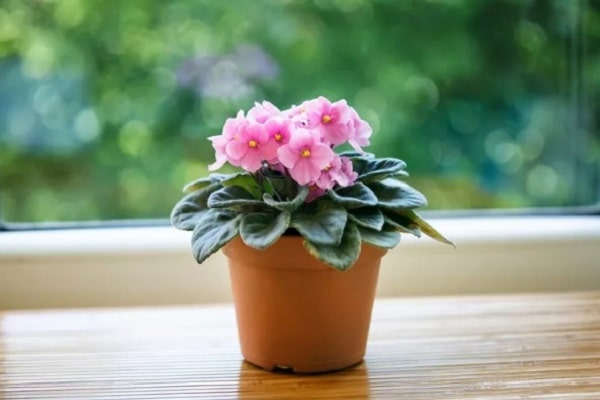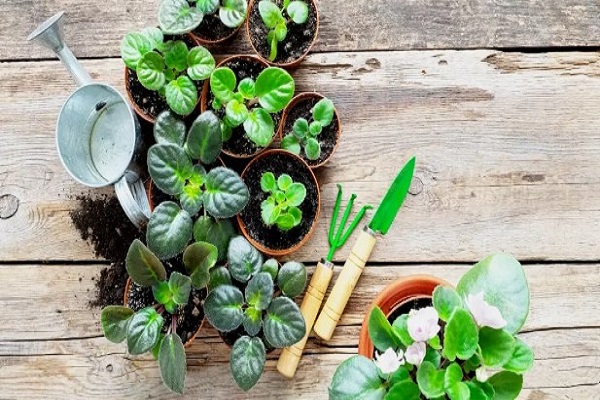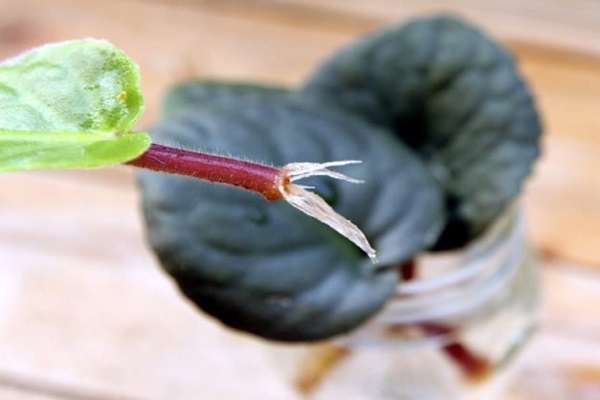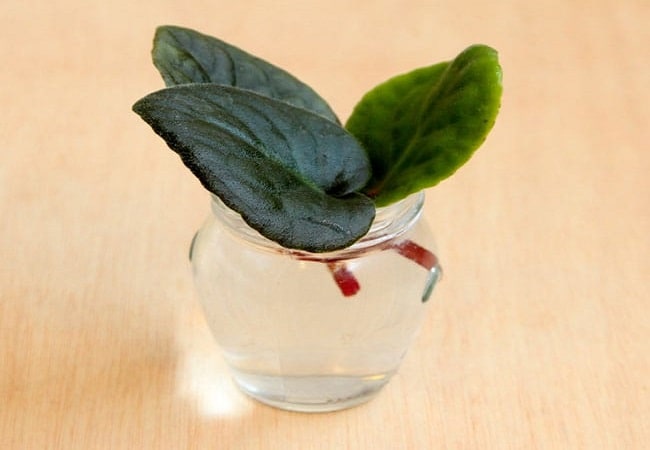African Violets, scientifically known as Saintpaulia, are beautiful flowering plants that have become popular among plant enthusiasts. They are known for their delicate and vibrant flowers in various colours and patterns. Propagate African Violet in water allows enthusiasts to expand their collections and share the joy of these stunning plants with others.
One effective method is water propagation, which offers several advantages over other methods. In this article, we will explore the world of African Violets, discuss the importance of propagation, and delve into the process of propagating African Violets in water.
Quick Navigation
how to care for African violet in indoors

Description of African Violets
African Violets are compact, herbaceous plants with fuzzy leaves and showy flowers. Their leaves are typically dark green and soft, and the flowers can be single or double-petaled, ranging from white and pink to purple and blue. The plants usually have a rosette growth habit, with leaves arranged in a circular pattern around the centre.
Popular Varieties of African Violets
Numerous African Violet varieties are available, each with its unique characteristics. Some popular varieties include the Optimara series, which offers a wide range of colours, and the Miniature African Violets, which are prized for their small size and delicate flowers. Other notable varieties include the Variegated African Violets, which have leaves with variegated patterns, and the Ruffled African Violets, which exhibit frilly petals.
Growth Requirements of African Violets
African Violets thrive in specific growing conditions. They prefer bright, indirect light and require moderate temperatures ranging from 65°F to 75°F (18°C to 24°C). Adequate humidity levels between 40% and 60% are crucial for their well-being. Additionally, they require a well-draining soil mix that retains moisture without becoming waterlogged. Proper care and attention to these requirements are essential for healthy growth.
Propagate African Violet In Water Methods

Seed Propagation
One common method of propagating African Violets is through seeds. However, this method can be more time-consuming and challenging for beginners. It involves sowing the seeds in a suitable growing medium, providing appropriate temperature and humidity, and patiently waiting for them to germinate and grow into mature plants.
Leaf Cutting Propagation
Leaf-cutting propagation is another popular method that involves taking a healthy leaf from a mature African Violet plant and encouraging it to develop roots and form a new plant. This method requires careful handling and the use of rooting hormone to stimulate root growth.
Water Propagation
Water propagation is an effective and relatively simple method of propagating African Violets. It involves placing a leaf cutting or a leaf with a petiole (stalk) in water, allowing it to develop roots before transferring it to the soil. Water propagation provides an opportunity to observe root growth and ensures a higher success rate than other methods.
Water Propagation of African Violets

Benefits of Water Propagation
Water propagation offers several benefits for propagating African Violets. Firstly, it provides a clear view of root development, allowing you to monitor the progress and ensure the health of the new plant. Additionally, water propagation avoids the risk of soil-related issues such as fungal diseases or poor drainage. It is also an excellent method for beginners, requiring minimal equipment and providing a higher success rate.
Selecting a Healthy Leaf
Choose a mature and healthy leaf from a well-established African Violet plant. Look for a leaf with no signs of damage or disease. Ensure the leaf has a petiole (stalk) attached, aiding the propagation process.
Preparing the Leaf for Propagation
Trim the leaf’s petiole to a length of about 2-3 inches (5-7.5 cm). Remove lower leaves from the petiole, leaving only a few at the top. This will prevent them from submerging in water and potentially rotting.
Placing the Leaf in the Water
Fill a small container, such as a glass or a jar, with filtered or distilled water. Place the trimmed end of the petiole into the water, ensuring the leaf remains above the water level. You can use a toothpick or a small support to keep the leaf steady and prevent it from sinking.
Maintaining the Water Conditions
The receptacle should be exposed to indirect light that is bright. Avoid exposing the leaf to direct sunlight, as it can cause damage. Monitor the water level regularly and replenish it to ensure the petiole remains submerged.
Root Development and Plantlet Formation
Over time, usually, within a few weeks, you will see roots emerging from the submerged end of the petiole. It is essential to be patient during this stage and resist the temptation to rush the process. Once the roots have developed sufficiently and are several inches long, you can proceed to the next step.
Transferring the Plantlet to Soil
Get ready a tiny container with African violet-friendly soil mix that drains nicely. Gently remove the leaf from the water, carefully not to damage the delicate roots. Carefully insert the plantlet’s roots into the hole you dug, keeping the leaf above ground. Lightly pack soil onto the plantlet’s hearts to keep it in place.
Tips for Successful Water Propagation
Choosing the Right Container
Select an appropriately sized container for the leaf-cutting, ensuring enough space for root development. Clear containers are ideal as they allow you to observe the root growth.
Maintaining Appropriate Water Temperature
African Violets prefer slightly warm water, so maintain the water temperature between 70°F and 80°F (21°C and 27°C) for optimal root development. Avoid using too cold or too hot water, as extreme temperatures can negatively affect root growth.
Monitoring Water Quality
Use filtered or distilled water to prevent chemicals or impurities from affecting the plant’s health. It is important to change the water regularly to prevent the buildup of harmful bacteria or algae.
Providing Adequate Light Conditions
Place the container in a location that receives bright, indirect light. African Violets require sufficient light for healthy growth but should be protected from direct sunlight, as it can scorch the leaves.
Managing Humidity Levels
African violets flourish under conditions of mild humidity. A translucent dome or cover can be placed over the container to boost humidity levels for the plant. This will help retain moisture and create a microclimate that promotes root development.
Troubleshooting and Common Issues
Root Rot
If you notice a foul smell or black, mushy roots, it indicates root rot. To prevent this, avoid overwatering and ensure proper drainage. If root rot occurs, you may need to trim the affected roots and transfer the plantlet to fresh water or soil.
Mold or Fungal Growth
Excessive moisture and poor ventilation can lead to mould or fungal growth. If you encounter this issue, remove the affected leaf or plantlet, clean the container, and replace the water or soil.
Lack of root development
If you notice a lack of root development after several weeks, it could be due to various factors. Check the water temperature, ensuring it is within the optimal range. Also, review the light conditions and make sure the leaf-cutting receives enough indirect light. Additionally, check the water quality and consider changing it if it appears stagnant or contaminated.
Slow Growth or Wilting
If the plantlet exhibits slow growth or starts to wilt, it may indicate inadequate moisture or improper watering. Maintain a steady, but not drenching, moisture level in the soil. Adjust your watering routine accordingly, ensuring the plant receives enough water without becoming oversaturated.
Transferring Water-Propagated African Violets to Soil
Preparing the Soil Mixture
Get African violets some potting soil with good drainage, or make your own out of peat moss, perlite, and vermiculite. This blend strikes a nice balance between water retention and drainage.
Transplanting the Plantlet
Carefully remove the plantlet from the water, gently holding it by the leaves to avoid damaging the delicate roots. Place the roots into a small hole in the soil mixture, ensuring the leaf remains above the surface. Firmly but gently press the soil around the roots to secure the plantlet.
Post-Transplant Care
After transplanting, water the plantlet lightly to settle the soil around the roots. Put the plant container somewhere that gets lots of indirect sunlight and has a consistent level of humidity. Avoid direct sunlight, as it can cause leaf burn. Monitor the plantlet closely during this transition period and adjust the watering frequency to prevent drying out or overwatering.
Caring for African Violets after Propagation
Light Requirements
African violets require indirect, bright light in which to flourish. Indoor plants can thrive with either direct exposure to filtered sunlight or synthetic grow lights.
Watering and Fertilizing Guidelines
Water African Violets thoroughly, but allow the soil’s top inch (2.5 cm) to dry out slightly between waterings. Avoid wetting the leaves to prevent leaf spots. Fertilize regularly with a balanced, water-soluble fertilizer formulated for African Violets, following the manufacturer’s instructions.
Temperature and Humidity Considerations
Maintain a temperature range of 65°F to 75°F (18°C to 24°C) for African Violets, avoiding extreme temperature fluctuations. Adequate humidity levels between 40% and 60% are beneficial. Use a humidifier, set up a water tray, or cluster some plants to raise the relative humidity.
Common Pests and Diseases and Their Management
Common pests affecting African Violets include aphids, mealybugs, and spider mites. Pests can be eliminated with insecticide soap or neem oil if they are spotted.
Additionally, watch out for common diseases such as powdery mildew or botrytis and promptly address them with suitable treatments.
FAQs
How Long Does It Take African Violets To Root In Water?
The rooting time for African violets in water can vary, but roots usually take 2 to 6 weeks to develop. The exact timeframe is contingent on variables such as the African violet variety, the surrounding environment, and the state of the leaf cutting.
Can You Put African Violet In Water To Root?
Yes, African violets can be propagated in water. Water propagation is a popular method for rooting African violets as it allows for easy observation of root development. By placing a healthy leaf cutting or a leaf with a petiole (stalk) in water, the plant can develop roots before being transferred to the soil.
Can African Violets Survive In Water?
While African violets can be propagated in water, they are not suited for long-term survival in water alone. African violets are terrestrial plants that require a well-draining soil mix to provide nutrients and oxygen to their roots. Water should be used primarily for rooting purposes, and once roots have developed, the plantlet should be transferred to soil for continued growth and health.
What Is The Fastest Way To Propagate African Violets?
The fastest way to propagate African violets is through leaf-cutting propagation. By carefully taking a healthy leaf with a petiole from a mature plant and providing suitable conditions, such as using rooting hormone and a well-draining soil mix, the leaf-cutting can develop roots and form a new plant within a few weeks. This method allows for quicker propagation compared to seed propagation or water propagation.
Why Are African Violets So Hard To Grow?
African violets can be considered somewhat challenging to grow for several reasons. First, they have specific growth requirements, including the need for bright, indirect light, moderate temperatures, and appropriate humidity levels. Maintaining these conditions consistently can be challenging in certain environments. Secondly, African violets are susceptible to overwatering and are sensitive to improper watering practices, such as wetting the leaves or allowing the soil to become waterlogged.
Conclusion
Water propagation is an accessible and effective method for propagating African Violets, offering several advantages such as clear root development observation and higher success rates. By following the step-by-step process and implementing the tips provided, you can successfully propagate African Violets in water. Embrace the joy of growing and sharing these beautiful plants, and let the colourful blooms of African Violets brighten your home and garden.

My name is Md Deloar Hossain and I’m the creator of Club Gardening, designed for all your gardening ideas, gardening product reviews, and a place to help you find the best gardening experience possible.


